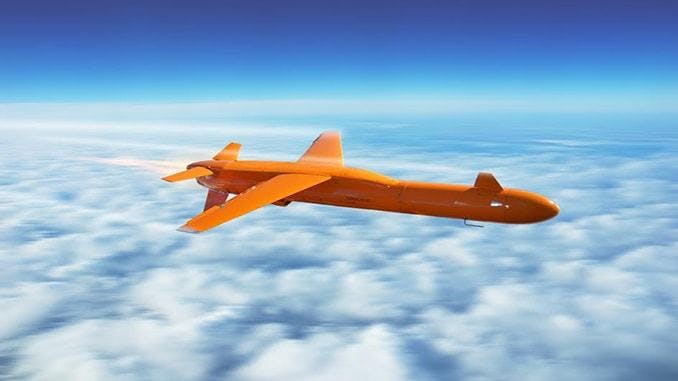Drones news
Leonardo introduces New M-40 target drone at Paris Air Show
<ul>
<li><strong>The M-40 provides medium-to-high performance at a cost comparable with entry-level competing target drones</strong></li>
<li><strong>Leonardo’s Mirach-family drones are the standard threat simulators of Armed Forces around the world including France, Italy and the UK</strong></li>
<li><strong>A number of design enhancements, such as the removal of all pyrotechnics, mean that the M-40 is readily exportable and benefits from low through-life-costs </strong></li>
</ul>
<p><img alt="Clouds1" src="http://www.leonardocompany.com/documents/63265270/80510103/squared_medium_squared_original_Mirach40_S.jpg" /></p>
<p><strong>Leonardo</strong> introduces its <strong>new aerial target drone</strong> to the market at the <strong>2017 Paris Air Show</strong>. Based on the company’s experience with its successful ‘<a href="http://www.leonardocompany.com/en/-/mirach-1005" target="_blank"><strong>Mirach 100/5</strong></a>’ target drone which has earned a place as the standard threat simulator of international Armed Forces including France, Italy and the UK, the new ‘<a href="http://www.leonardocompany.com/en/-/mirach40" target="_blank"><strong>Mirach 40</strong></a>’ (M-40) is designed to provide medium-to-high performance at a price comparable with competitors’ entry-level drones.</p>
<p>The <strong>M-40</strong> is a remotely-piloted aerial system (RPAS) that supports Armed Forces training by simulating a range of airborne threat targets. Able to convincingly mimic a variety of aircraft and missiles, the target drone can simulate radar, infrared (IR) and visual threats. This allows Armed Forces to ‘shoot down’ the reusable <strong>M-40</strong> in realistic scenarios, allowing them to train with and qualify a wide variety of weapon systems. Developed in-house by <strong>Leonardo</strong> using commercial components, the <strong>M-40</strong> is readily exportable around the world.</p>
<p>Responding to the fact that customers worldwide increasingly need to ‘do more with less’, the <strong>M-40</strong> builds on <strong>Leonardo</strong>’s experience with the <strong>Mirach 100/5</strong> to offer a majority of the performance of such a model at a significantly reduced cost. The <strong>M-40</strong> is suitable for a range of training purposes, from Ground Based Air Defence (GBAD) artillery training to the simulation of high-performance aerial threats for Navy and Air Force training. <strong>Leonardo</strong> will also continue to offer the <strong>Mirach 100/5</strong> alongside the <strong>M-40</strong> to simulate the highest-performance threats facing modern Air Forces. The <strong>M-40</strong> uses the same ground control station as the <strong>Mirach 100/5</strong>, meaning that pilots need very little training to switch to the new drone and armed forces can operate mixed fleets of <strong>M-40</strong>and <strong>Mirach 100/5</strong> drones.</p>
<p>Because the new <strong>M-40</strong> inherits the flight characteristics of the proven <strong>Mirach 100/5</strong>, it comes with a <strong>versatile range of high-performance features</strong> including a low-altitude ‘sea skimming’ capability and the ability to execute high-G maneuvers, both uncommon in comparatively-priced competing systems. The refined aerodynamics of the <strong>M-40</strong> also allows it to exceed the speed of most twin-engine systems, despite employing a single commercial, multi-fuel engine. The use of a single engine also reduces maintenance requirements and allows for easier deployment even at very remote training ranges. To ensure that <strong>M-40</strong> is easy to store and transport, it is designed to operate without pyrotechnics, even for launch and parachute deployment.</p>
6/18/2017
22350
